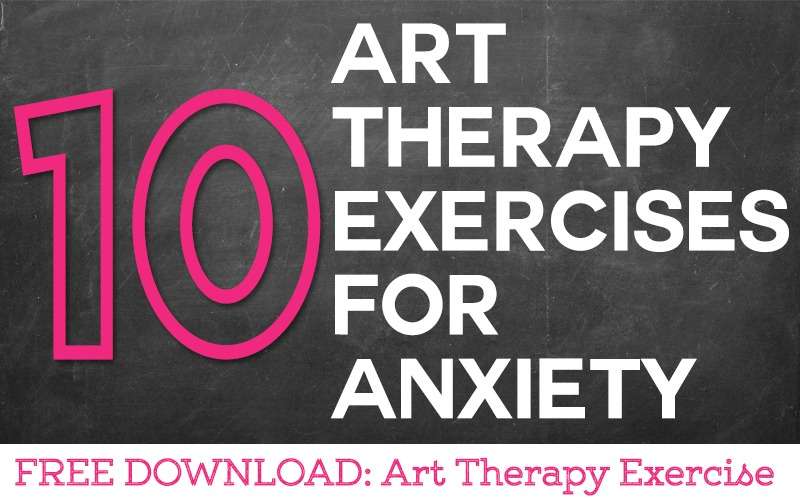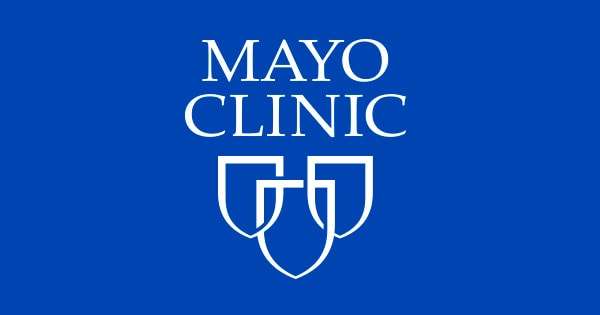Health Anxiety and Interoceptive Exposure
By Norman Cotterell, PhD
Beck Institute Faculty
When a client of mine, Adam, was 22, he received the following diagnosis during a routine physical: elevated liver enzymes. He thought, “Oh my God, I’m going to die.” It was later revealed that the lab results were in error, but as he reported to me ten years later: “This catapulted me into health anxiety.”
Health anxiety involves focusing on the catastrophic consequences of an unexpected physical sensation, or health circumstance, (i.e. “If my chest hurts, I have a heart problem,” “If my enzymes are elevated, it will lead to my death.”) Unlike panic, however, the feared consequences are not immediate. Panic is characterized by an imminent catastrophe. Health anxiety is characterized by an eventual catastrophe. It is often accompanied by safety behaviors such as checking, reassurance seeking, information gathering, avoidance, thought stopping, or rumination, and is also characterized by an intolerance of uncertainty.
The Three B’s
For Adam, these eventual catastrophes were legion. Over the course of 10 years, his fears accumulated as he built his career and got married. And with two children, his anxiety grew along with his responsibilities. His health anxiety symptoms were expressed in the “Three B’s” of Body, Belief, and Behavior.
Body as Expressed in Physical Sensations
Adam reported tingling in the face, hands and feet, palpitations, premature ventricular contractions (PVCs), gastrointestinal distress, headaches, having a lump in his throat, and hot flashes.
Belief as Expressed in His Thoughts
He thought, “I have spine cancer, testicular cancer, throat cancer. I’m overwhelmed; it’s too much; I can’t get over this.”
Behavior as Expressed in Urges
He was constantly distracted by urges to:
- Check: “I can touch my groin, back or neck 50 times in a day to check for signs of cancer.”
- Seek reassurance: “I have to ask my wife, sister, mom, a co-worker, my mom’s husband (a physician), family doctor, and lastly, a specialist, whether or not I have a serious illness and am going to be okay.”
- Avoid: “I don’t watch medical shows. I stay away from sick people.”
- Engage in safety behaviors: Mental rituals (such as counting), overuse of anti-bacterial hand gel.
It’s Not About Health
People who fear an illness often behave quite differently from those who have an illness. People who fear heart disease often avoid exercise, while people with heart disease often exercise as recommended by their physician. My client was well aware that his actions were not healthy, and that knowledge added to his distress. He stated that his major goals for therapy were: “To have this weight lifted off my shoulders and stop being so worried about my health,” and be able to say, “That’s a silly thought!” He regarded his actions as ridiculous, unhealthy, and a burden on his family. But he also regarded them as the only way that he could “get a minute of peace.” By his own reckoning, he could not tolerate a minute more of these fears, feelings, sensations, thoughts, and urges to check or avoid. He expected they would lead to his complete and utter collapse. But in therapy, he needed to test this expectation, learning that a minute more of these fears would not cause him to collapse.
Interoceptive Exposure
Jon Abramowitz regards interoceptive exposure as a way to test the expectation, present in a variety of anxiety disorders, that sensations are intolerable. By triggering feared sensations, anxious clients can gain greater distress tolerance. They can disconfirm incorrect beliefs about the sensations. And they can reduce their sensitivity to the sensations. Here’s a list of ways to elicit the sensations that trigger anxious clients’ fears:
- Dizziness, headache: Shake head side to side (30 seconds, 2 turns a second, with eyes open)
- Tight throat, breathlessness, dry mouth: Swallow quickly (10 times)
- Chest tightness, breathlessness, hot flashes: Straw breathing (30 seconds, as deeply as possible)
- Derealization, dizziness, tingling appendages: Hyperventilate (60 seconds, standing up)
- Disorientation, nausea: Place head between legs (30 seconds)
- Heart racing, feelings of heat: Run in place (60 seconds)
- Lightheadedness: Hold breath (60 seconds)
- Dizziness: Spin (30 seconds).
The most clinically relevant exposures for this client involved hyperventilation (tingling), straw breathing (breathlessness), and running in place (heart racing). We started with hyperventilation. He raised his hand after 15 seconds to indicate that the sensations seemed intolerable, and we identified the fears about the sensations:
What did you worry would happen? “It wouldn’t go away.”
Was it as bad as you expected? “I handled it better than I thought.”
Did that surprise you? “A little.”
What would happen if we did it a little longer? “Probably nothing.”
What did you learn? “I’m stronger than I thought.”
In many ways, this is also an exposure to uncertainty, as he didn’t know what would happen by increasing the feared sensations through exposures. But in courageously facing such uncertainty, he was able to attain greater certainty of his strength, and in his ability to cope with the feared sensations without using any avoidance strategies or safety behaviors. We listed the benefits of being willing to experience the sensations while embracing the uncertainty: “I have more peace. I can live in the moment. I can be a normal person. I can be happy and content.” This exercise was a step in that direction.
References
Blakey, S.M. & Abramowitz, J.S. (2018). Interoceptive Exposure: An Overlooked Modality in the Cognitive-Behavioral Treatment of OCD. Cognitive and Behavioral Practice 25 145-155
Craske, M.G., Treanor, M., Conway, C.C., Zbozinek, T. & Vervliet, B. (2014). Maximizing Exposure Therapy: An Inhibitory Learning Approach. Behaviour Research and Therapy 58 10–23.
Upcoming Workshops
CBT for Chronic Medical Conditions
February 11-13, 2019
Learn More
CBT for Anxiety
February 25-27, 2019
Learn More
Anxiety is the body’s natural response to the perception of threat. Because most people consider their physical health to be of great importance, it is not surprising that most people experience anxiety about their health from time to time. Most people’s health anxiety is fleeting, in that reassurance from a medical professional alleviates any distress and worry.
Other people, however, experience anxiety about their health that is intensely distressing, frequent, and persistent. Such “clinical health anxiety” is especially common for people with psychological disorders such as illness anxiety disorder (IAD), obsessive-compulsive disorder (OCD), generalized anxiety disorder (GAD), panic disorder, or somatic symptom disorder (i.e., hypochondriasis, pain disorder). In health anxiety (which is not an official diagnosis itself), the person experiences excessive, unreasonable fears of, and a preoccupation with, having or acquiring a serious illness such as heart disease, cancer, or some other physical malady. The fear and anxiety is usually based on a misinterpretation of a harmless (or minor) bodily sensation (e.g., heart fluttering, dizziness, headache) and it persists in spite of appropriate medical evaluation and determination that no medical problem is present.
People with health anxiety typically engage in a number of behaviors to try to reduce their distress. Examples include frequently visiting doctors, excessively researching diseases and their symptoms on the Internet, repeatedly seeking reassurance from loved ones, and excessively checking and inspecting aspects of their body (e.g., lumps, moles) and its by-products (e.g., smell or color of excrement). Although medical reassurance and checking may temporarily reduce the health-related concerns, these behaviors do not usually quell the anxiety in the long run.
An alternative fear-reduction strategy used by some people with health anxiety is to avoid information related to illnesses (e.g., news segments about global pandemics) because of the intense distress that such information causes. They may also avoid hospitals and other important aspects of medical care (e.g., giving self-breast exams) out of fears of catching a disease or confirming their worst fears that a disease is present.
Health anxiety is not the same as “faking,” nor are those with health anxiety necessarily “crying wolf” to seek attention. Health anxiety exists on a continuum from mild to extremely severe. In the most severe instances, people with health anxiety cannot hold a job or sustain meaningful relationships. They might relocate to live close to medical centers, fearing that a serious illness or death could befall them at any point.
As mentioned above, health anxiety might be related to a number of psychological or medical conditions, including:
• GAD. People with GAD struggle with worries about many aspects of their life, often seeking reassurance to make life more bearable. Health is one of the possible areas of concern in this condition.
• OCD. OCD may include fears of contamination and illnesses similar to health anxiety. The two problems might also overlap in terms of checking and reassurance-seeking rituals.
• Panic disorder. People with panic disorder suffer panic attacks and thereafter have a tendency to misinterpret physical sensations (e.g., racing heart) as the symptoms of a serious medical problem (e.g., heart attack). The fears in panic disorder are usually of acute, immediate bodily sensations associated with physiological arousal, whereas worries in health anxiety tend to include a broader range of bodily sensations and diseases.
• Conversion disorder. People with conversion disorder usually report a loss of physical functioning (e.g., loss of movement and/or feeling in a limb) and other unexplained physical symptoms that can lead to fears regarding health status.
• Delusional disorder, somatic type. People with health anxiety may express strong conviction that they have medical maladies (even despite medical reassurance to the contrary), but at other times are able to consider the possibility that they are mistaken. People with delusional disorder, however, are more convinced that their health-related fears are realistic and are unable to consider alternatives. Somatic delusions, which are those focused on the body and its functions, also tend to be more bizarre (e.g., believing the body is infested with parasites) than the typical concerns in health anxiety.
• Depression. Some people with depression worry about their health and experience unexplained physical symptoms. These health concerns most often occur when depressive episodes are at their worst.
• Underlying medical condition. Just because someone has severe health anxiety does not automatically mean that they do not have any medical illnesses. Consequently, health care professionals should assess for underlying medical conditions (e.g., neurological or endocrine disorders) that may be causing the distressing physical symptoms. However, no more than routine medical assessment is necessary. Care should be taken not to fall into the trap of excessive medical reassurance seeking (and reassurance giving) as mentioned above.
Who Is Affected by Health Anxiety?
Lifetime prevalence rates of clinically severe health anxiety in the general population vary widely, ranging from .02% to 7.7%. This wide range is the result of the fact that estimates come from different types of samples. Prevalence rates are highest in primary care settings and among those who already have a bona fide medical condition (e.g., Crohn’s disease). Clinical levels of health anxiety affect men and women about equally and generally have an onset sometime in adulthood.
What Are Its Effects on the Sufferers and Their Loved Ones?
As mentioned, health anxiety causes significant distress and impairment in social, occupational, and other daily functioning. Those with overwhelming preoccupations about health status might frequently visit doctors to perform laboratory tests (e.g., echocardiogram) or seek medical reassurance (i.e., have the doctor tell them they are healthy), which can be quite costly over time. Significant others of those with health anxiety, such as friends, romantic partners, and family members, may also be affected. For instance, they may have to leave work in the middle of the day to take loved ones to medical appointments, contribute personal income to medical expenses, or experience relationship distress related to accommodating health-related requests (e.g., constantly providing reassurance, assisting with excessive decontamination rituals in the home).
Who Can Diagnose Health Anxiety?
It is important to consider health anxiety as a diagnosis when frequent and intense preoccupation with unexplained physical symptoms persists despite a thorough medical examination that fails to identify any disease or abnormality. In these instances, general practitioners may recommend seeing a psychiatrist, psychologist, or other mental health professional. These individuals will conduct a diagnostic assessment that may include certain questionnaires or an interview as well as a review of one’s medical records. Although many people referred for psychological assessment may understandably become frustrated, or even upset, that their doctor believes the problem is “all in their head,” it is important to remember that health anxiety is a valid—and treatable—condition.
What Treatment Options Exist for Health Anxiety?
Certain antidepressant medications can be helpful in reducing health anxiety symptoms, but the reasons that these medications work are presently not clear. Advantages of medication treatment include general safety and ease of use, as well as minimal time required for follow-up (i.e., one only needs to coordinate with prescribers for refills). Disadvantages of medication include limited expectations for improvement, the need to remain on these agents continuously, incurred financial costs over the long run, and possible short- and long-term side effects.
The first-line psychological treatment for health anxiety is cognitivebehavioral therapy (CBT). CBT is a skills-based approach that helps people learn to adopt different ways of thinking and behaving in response to health anxieties. CBT may involve education about how the body works, how diseases and illnesses affect the body, and how behaviors—such as checking, avoidance, and reassurance seeking—are not solutions to the problem. CBT also helps people with health anxiety to identify and challenge misinterpretations of benign bodily sensations as well as more deeply held maladaptive beliefs about health, illness, and medicine more generally. Exposure—a technique commonly used in CBT for health anxiety—also helps people to reintroduce feared or avoided stimuli (e.g., body sensations, places) and refrain from engaging in maladaptive health-related behaviors (e.g., body checking). In essence, CBT teaches the person to better manage their fear, which often leads to long-term fear reduction and improvement in life functioning.
Advantages of CBT include its general long-term effectiveness and relatively brief duration (usually 12 to 20 sessions). This treatment has been well studied and shown to improve health anxiety in the majority of people (although not all) who receive it. The main disadvantage of CBT is that it requires more effort than taking a medication. CBT asks clients to learn and practice alternative ways of thinking and behaving in response to their health anxiety, which takes some level of motivation and effort. A qualified mental health professional should be able to describe the advantages and disadvantages of each treatment approach in greater detail.



